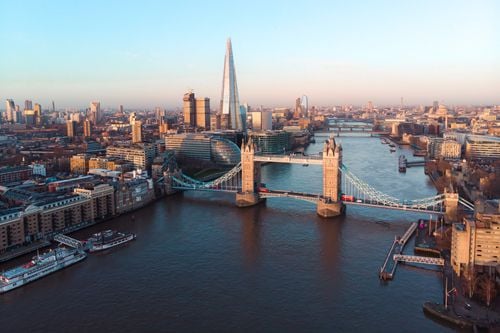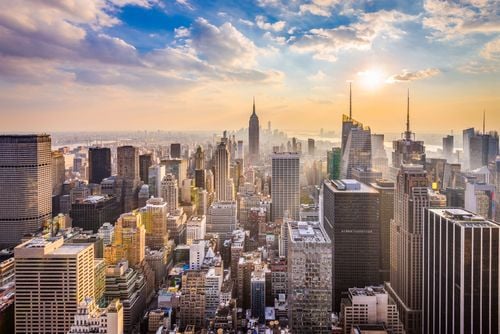The national park has been officially in existence since 1983 and is even on the list of the most popular and visited national parks in the world.
It's rare to see a vast national park inside a major city... Seoul is the exception. Between its skyscrapers lies Bukhansan National Park. This mountainous expanse covers around 50 km2 in the north of the Korean capital. It contains over 100 temples and is home to 1,300 different species of plants and animals. A veritable green lung for Seoul, the park holds the title of most visited national park by unit area according to the Guinness Book of World Records. Bukhansan is the city's highest mountain, providing a backdrop for miles around! It is named after Bukhan Mountain, which means "mountain north of the Han River". Since the creation of the northern border, a fortress has stood in the middle of the park to protect against foreign invasions. On the programme: sporting activities and discovery of hidden temples.
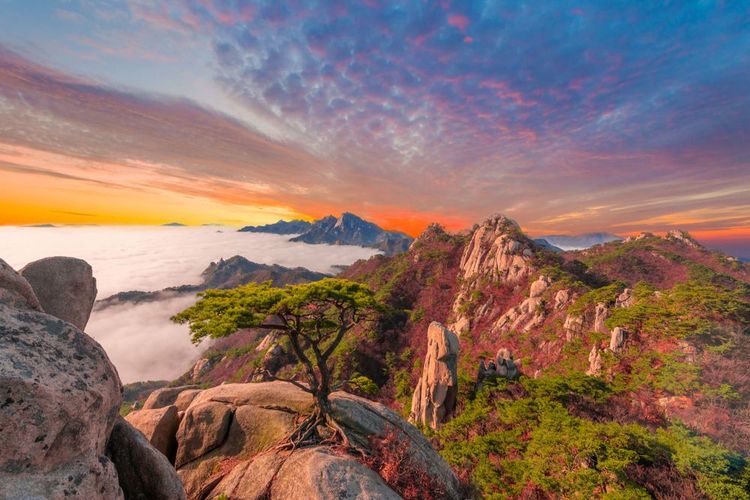
Bukhansan National Park in the fog.
- © Mongkol chai / Shutterstock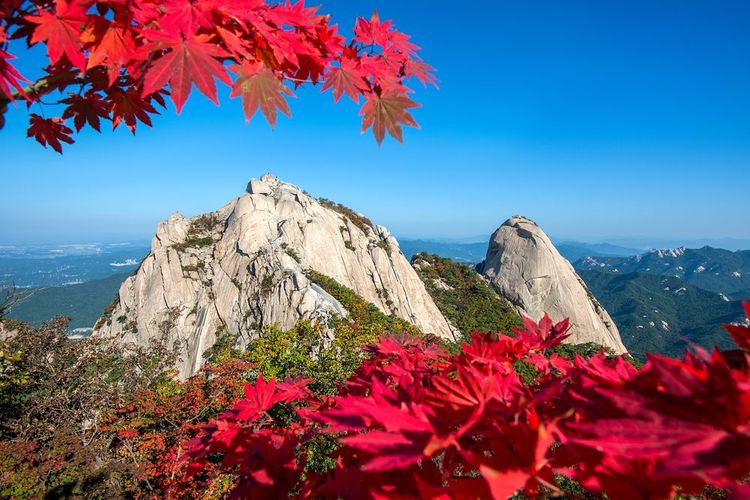
What can be done?
Bukhansan National Park is packed with granite peaks, streams and wild forests. Nature lovers flock to the park to enjoy hiking and local birdwatching. As well as its abundant nature, the park also boasts numerous cultural and historical attractions, from temples to fortresses.
Nestling in the heart of the park, the Jingwansa temple, built in the 11th century, is famous for being a centre of education. It contained an impressive library for teaching Confucian scholars. Sadly, the original temple was burnt down during the Korean War, but has since been restored. The temple still maintains a dedication to higher education by transforming itself into a training centre for female monks. Today, it is possible to enrol in one of its programmes at the temple to understand monastic life (book directly on site).
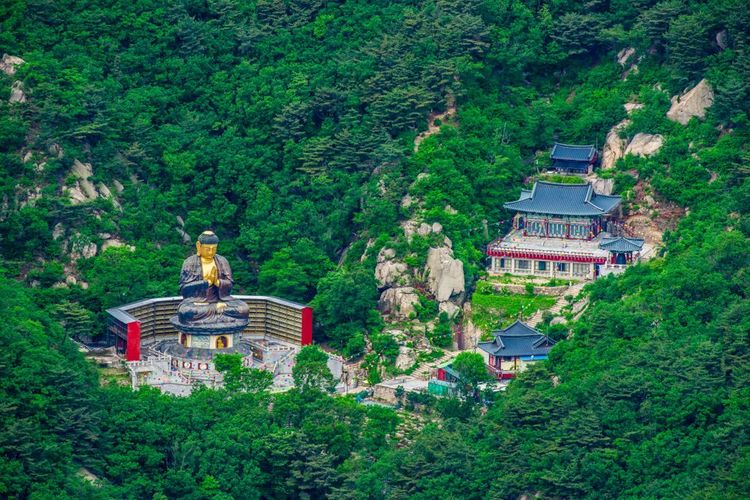
One of the hidden temples in Bukhansan Park
- © nop popeye77 / ShutterstockVisitors love the colourful architecture, extensive gardens and statues at Hwagyesa Temple, considered to be the most beautiful temple in Bukhansan National Park. It was founded in 1522 and nestles at the foot of Samgak Mountain.
The Bukhansan mountain was a natural barrier against foreign invasion. However, to make the city even safer, the Bukhansanseong fortress was built in the 2nd century. The impressive stone fortress is still standing (the original fortress was destroyed, but the current version dates from 1711), and is a majestic example of Joseon dynasty architecture.
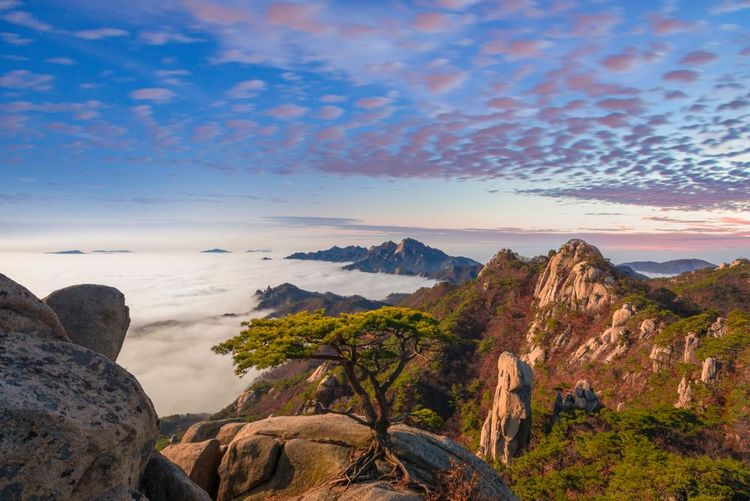
Dobongsan mountain in the morning in Bukhansan national park
- © Mongkol chai / ShutterstockThe best walks and trails
Hiking is the main activity in Bukhansan Park. And trails abound throughout the region. However, certain paths are often closed in turn to protect biodiversity.
Daenammun route: This 2.5-hour trail passes through picturesque countryside with gentle slopes, ideal for beginners and families.
Obong route: This particularly authentic hike passes beneath the Dobongsan mountain and takes visitors to the Songchu waterfall. The hike takes around two hours and has a few inclines, but is not considered to be an intense or difficult trail.
Baegundae Peak: The highest point in Bukhansan National Park is Baegundae Peak, which rises to around 830 metres. Most sports enthusiasts start the hike from the western entrance to the park, with the climb to the summit involving a complicated passage between dirt tracks, steps and rocks to climb. The hike is quite difficult, especially towards the end. With ropes, you can climb back up the mountain. The effort is rewarded by a breathtaking view of Seoul.
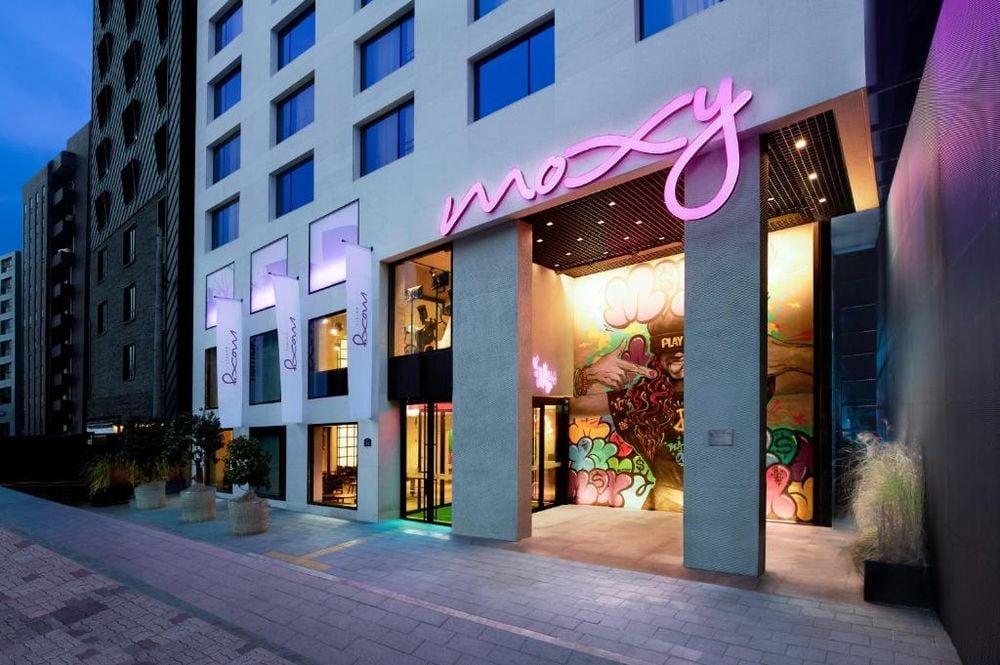 Seoul
Seoul
Moxy Seoul Insadong by Marriott
Located opposite Jongno 3-ga metro station (line 5), the Moxy Seoul Insadong offers modern rooms with flat-screen cable TV and free internet access.Where to stay in the park
Camping is not permitted in the park. To sleep in the park, you must therefore take part in one of the temple stay programmes. These Korean temple stay programmes offer visitors an insight into Buddhist life through programmes focusing on meditation, culture and tradition. Participants eat simple vegetarian meals and sleep in shared rooms.
- Geumsunsa Temple : This 600-year-old temple is within easy reach of downtown Seoul. Monastic life at the temple is very traditional, adding a unique cultural experience to your nature getaway.
- Hwagyesa Temple : Hwagyesa is famous among Buddhists around the world because of the monk Ven SoongSahn, who lived at the temple until his death in 2004.
- Jinkwansa Temple : People usually choose a stay at the temple for the serenity or spiritual experience, but Jinkwansa has been renowned for its hearty, healthy food for over 1,000 years.
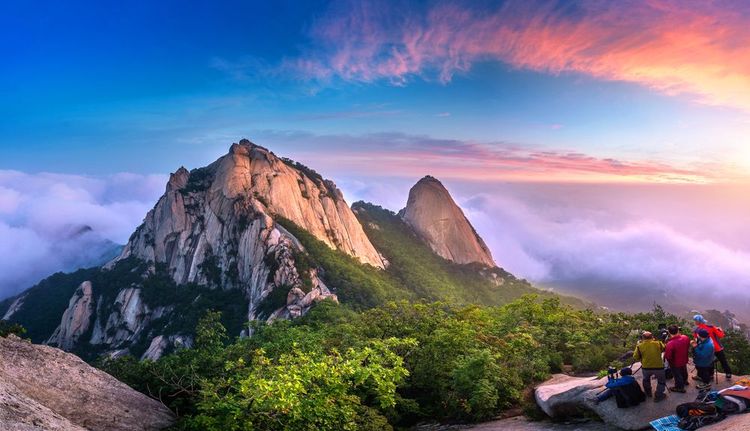
Bukhansan National Park at sunrise
- © Guitar photographer / ShutterstockPractical information
🚌 How to get there
Bukhansan National Park's multiple entrances are easily accessible from anywhere in Seoul by underground and bus. To enter from the western side of Bukhansan National Park, opt for metro line 3 (the orange line) to Gupabal station, then take the bus to the Bukhansan Mountain Entrance stop. To enter the east side of the park, Metro Line 4 (the light blue line) leads to Suyu station, followed by a brisk walk, taxi or bus ride to the park entrance.
👉 Tips for your visit
- Entry to the national park is free, as is entry to the temples and fortress of Bukhansanseong.
- The park is open all year round, but summer and winter can be very hot and very cold, respectively. Spring and autumn offer ideal hiking temperatures, not to mention beautiful spring flowers and autumn foliage.
- The Bukhansan National Park office provides a trail map and information in English.
- Korea is well known for its organised and well-maintained public spaces, and Bukhansan National Park is no exception. The park has many facilities, including a large car park, clean toilets, benches, picnic tables and miles of paths.


